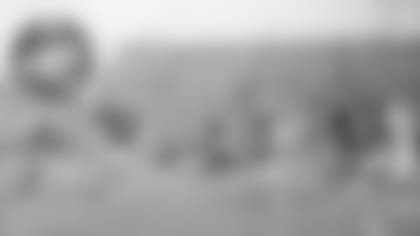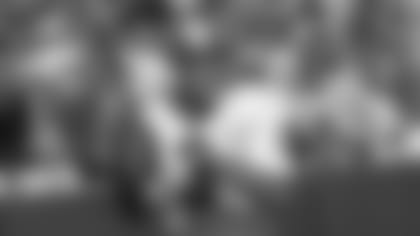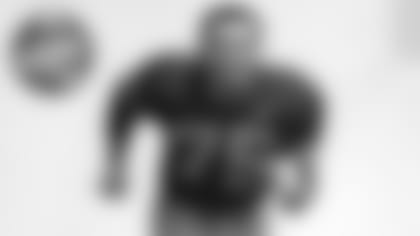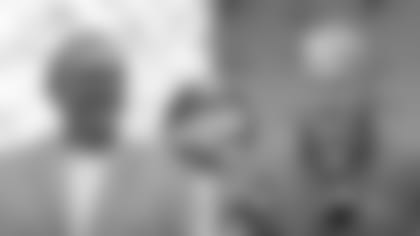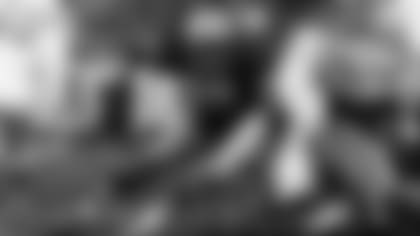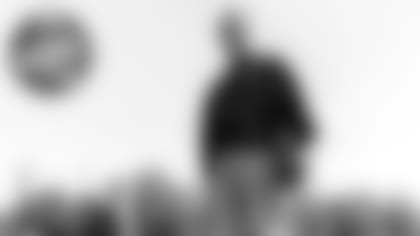There were a handful or so of stirring and memorable victories during the drought between Vince Lombardi and the forging of the Ron Wolf-Mike Holmgren union. They included late-season, NFC Central Division title-deciding victories over Detroit and Minnesota in 1972, the wacky Chester Marcol finish, the 48-47 Monday nighter, the Snow Bowl against Tampa Bay and the Instant Replay Game against Chicago in 1989.
Coaching changes and the rare winning seasons, in addition to such triumphs, sometimes kindled expectations during those 24 mostly dreadful and mediocre seasons from 1968 to 1991.
The bumper stickers of the time sold hope: "The Pack Will Be Back," "The 'Pack' is Devine," and "Fresh Start With Bart," among others.
Then there were the reality checks, the games that reminded everyone sustained success wasn't right around the corner.
Here are five of the most impactful of those regular-season duds, the losses that hit home like the thud of a Joltin' Joe Frazier punch to the gut.
1. Philadelphia 10, Packers 3 (Nov. 5, 1978) – The Packers entered the game 7-2 and looking to finish with a winning record for the first time in Bart Starr's four years as coach. Better yet, they had a two-game division lead on Minnesota and were only two weeks removed from a four-game winning streak. Lynn Dickey had not recovered from a season-ending broken leg the year before, but second-year quarterback David Whitehurst was liked by his teammates and coming off a late, game-winning drive against a good Tampa Bay defense the week before. He wasn't Dickey, but he was playing well enough. The Eagles looked to be improving, too, under third-year coach Dick Vermeil and were aiming to end an 11-year run without a winning season. But they were only 4-5 entering the game at Veterans Stadium in Philadelphia. While Whitehurst outgunned counterpart Ron Jaworski, 220 yards to 106, and the Packers outgained the Eagles, 385 yards to 148, they also committed more turnovers, 5 to 1, and more penalties, 74 yards in losses to 15. The decisive misadventure was a Whitehurst interception from the Eagles' 10-yard line with just over a minute to play. The Packers went 1-4-1 over the remainder of the season and finished 8-7-1, a half-game behind the Eagles and Atlanta in the wild-card race. The Eagles won 11 games the next year and the NFC championship in 1980 under Vermeil. The Packers continued to play sloppy football – they committed 85 turnovers to their opponents' 59 over the next two years – and sunk to 5-11 and 5-10-1 finishes under Starr.
2. Chicago 23, Packers 21 (Dec. 18, 1983) – With 3 minutes, 58 seconds remaining in the final game of the regular season, the Packers took the lead, 21-20, when Dickey engineered a 64-yard touchdown drive that featured completions of 19 and 23 yards to James Lofton in a minus-28 degree Soldier Field wind chill. Moments later, the Packers also learned they had gotten the help they needed when the Los Angeles Rams edged New Orleans and dropped the Saints to 8-8. All the Packers had to do was hold their lead and they'd make the playoffs by a tiebreaker over the Rams. But Jim McMahon drove the Bears 58 yards in 12 plays, mostly dinking and dunking the ball to run-of-the-mill weapons Jay Saldi, Matt Suhey and Emery Moorehead, and Bob Thomas kicked a 22-yard, game-winning field goal with 10 seconds left. The next day Starr was fired after nine seasons with a record of 52-76-3 and only one playoff appearance, that in a strike-shortened season. His teams had lost 20 games by 20 points or more and had won only 13 games against opponents that finished with a winning record. Hope had flickered throughout his tenure, but Dickey was 34 and Starr's last team had peaked at 8-8.
3. New York Jets 28, Packers 3 (Dec. 20, 1981) – All the Packers needed in the final game of the season was a victory over the Jets at Shea Stadium and for Philadelphia to beat the St. Louis Cardinals to earn a wild-card berth on a tiebreaker with the New York Giants. The Eagles did their part, crushing St. Louis, 38-0. But in what was Starr's seventh year at the helm and a game with probably the highest stakes yet for one of his teams, the Packers fell apart under the pressure. The Jets, on the other hand, rose to the occasion and made the playoffs for the first time in 12 years. Dickey was sacked nine times behind a makeshift offensive line, although defensive tackle Joe Klecko led the way with 2½ sacks despite hobbling on and off the field between series with an injured ankle. The Packers had a bad snap that led to a blocked punt and a bobbled kickoff in the end zone instantly followed by a misguided decision to run it out that resulted in a tackle at the 5-yard line. Both blunders led to Jets touchdowns. The Packers crossed the 50-yard line only twice and averaged a woeful 1.3 yards per offensive play. The statistics were even more lopsided than the score. The Jets held an edge in first downs, 22 to 8; total yards, 393 to 84; and time of possession, 39:57 to 20:03. So much for thinking the Packers were on the verge of becoming a playoff team. Ever-practical veteran center Larry McCarren glumly said after the game, "I think this ball club has shown from time to time that … we can beat anybody. But, as we showed today, we can stink up the joint."
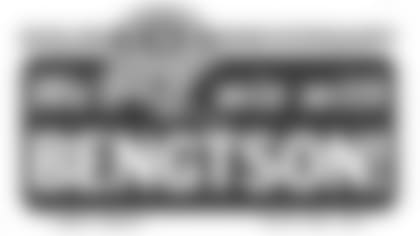
4. Detroit 40, Packers 0 (Sept. 20, 1970) –In 1968, Phil Bengtson's first season as coach, the Packers slumped to 6-7-1, but Lombardi was still on the job as general manager and every starter had been on at least two of his championship teams. Five of the losses were decided by a touchdown or less and could be blamed mostly on a woeful kicking game, something seemingly easy to fix. Bengtson's second team improved to 8-6 and there were still 19 of Lombardi's players in the lineup. Perhaps the book still wasn't closed on the Glory Years, or so some hoped. Then came the season opener in 1970. The Packers, despite being three-point favorites, were shut out at home for the first time in 21 years, dating to Curly Lambeau's final season as coach, and the 40-point loss was the worst since the Baltimore Colts inflicted a 56-0 romp on Scooter McLean's 1958 team. In the first half, the Packers gained a mere 27 yards in 25 offensive plays. They didn't manage a first down until just 6:27 remained in the third quarter. They converted only one of 12 third-down plays. On a beautiful 80-degree day, Dale Livingston delivered punts of 25, 22 and 20 yards and that was after his first opportunity on the first series was foiled by a bad snap from center that gave the Lions the ball at the Packers' 18. The most ignominious blow of all was Greg Landry's 76-yard run on a quarterback sneak to set up the Lions' final touchdown. When Starr threw a pass midway through the third quarter that was returned 40 yards for a touchdown, a home crowd of 56,263 erupted in a cascade of boos for the first time within memory, wrote Green Bay Press-Gazette sportswriter Lee Remmel, who had been covering the team since the mid-1940s. There was no longer any doubt: The Glory Years were over and Bengtson's days were numbered.
5. Philadelphia 36, Packers 14 (Dec. 1, 1974) – The Packers were only two years removed from winning the NFC Central Division in Dan Devine's second season as coach and they still had the same bruising backfield combination of MacArthur Lane and John Brockington, as well as most of their defensive starters from their 1972 team, plus newly acquired linebacker Ted Hendricks, who was having a Pro Bowl season. The thinking was that all the Packers needed to be a contender was a capable quarterback, and five weeks earlier Devine believed he had filled that void when he acquired 34-year old John Hadl for five high draft picks. So did an element of loyal fans and some writers covering the team, although others immediately lambasted the deal. When Hadl won his first three starts and lifted the Packers into playoff contention with a 6-5 record, hope in some quarters soared. Then reality set in. With winds gusting to 27 miles per hour, rain drenching the field and Veterans Stadium growing increasingly empty, the result of a no-show count that exceeded 24,000 and fans filing out in droves over the course of the game, the Packers lost five fumbles that the Eagles turned into four touchdowns and a field goal. Hadl fumbled three times at his own 5-, 41- and 4-yard lines and completed only 16 of 40 passes. The loss mathematically ended the dissension-wracked Packers' playoff chances and was followed by two more listless defeats at the hands of San Francisco and Atlanta, which unceremoniously ended the Devine era. He was the second of the post-Lombardi coaches to bite the dust.





